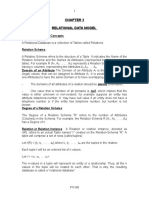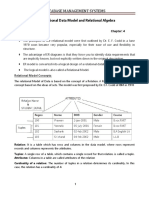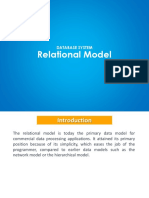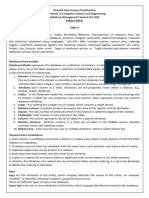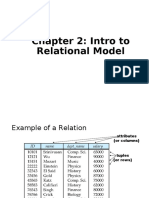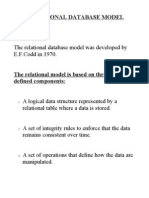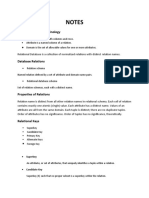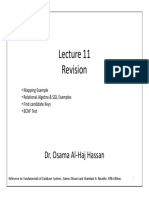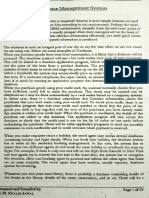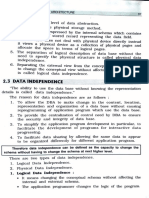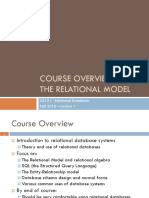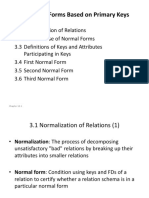0% found this document useful (0 votes)
27 views9 pagesChapter 2 - Introduction To Relational Model
The relational model organizes data into tables, each with unique columns, and is the primary model for commercial data processing due to its simplicity. It includes concepts such as relations, tuples, attributes, and keys (superkeys, candidate keys, primary keys, and foreign keys) to uniquely identify data and maintain relationships. Additionally, it covers database schemas, instances, and query languages for data manipulation.
Uploaded by
nevegessi3Copyright
© © All Rights Reserved
We take content rights seriously. If you suspect this is your content, claim it here.
Available Formats
Download as PDF, TXT or read online on Scribd
0% found this document useful (0 votes)
27 views9 pagesChapter 2 - Introduction To Relational Model
The relational model organizes data into tables, each with unique columns, and is the primary model for commercial data processing due to its simplicity. It includes concepts such as relations, tuples, attributes, and keys (superkeys, candidate keys, primary keys, and foreign keys) to uniquely identify data and maintain relationships. Additionally, it covers database schemas, instances, and query languages for data manipulation.
Uploaded by
nevegessi3Copyright
© © All Rights Reserved
We take content rights seriously. If you suspect this is your content, claim it here.
Available Formats
Download as PDF, TXT or read online on Scribd
/ 9











